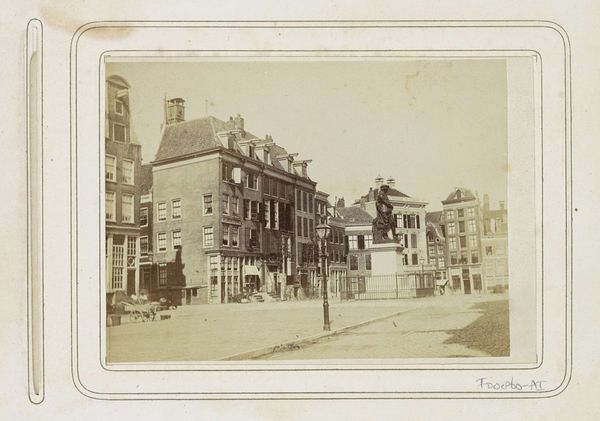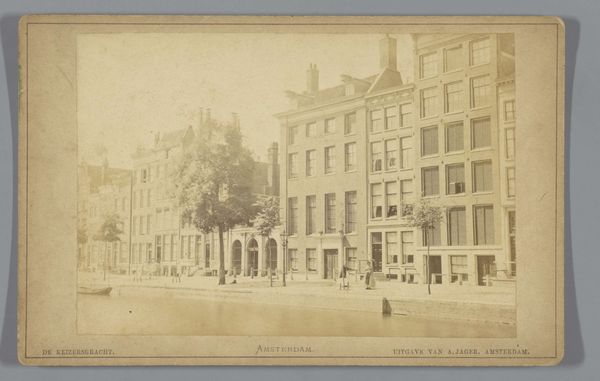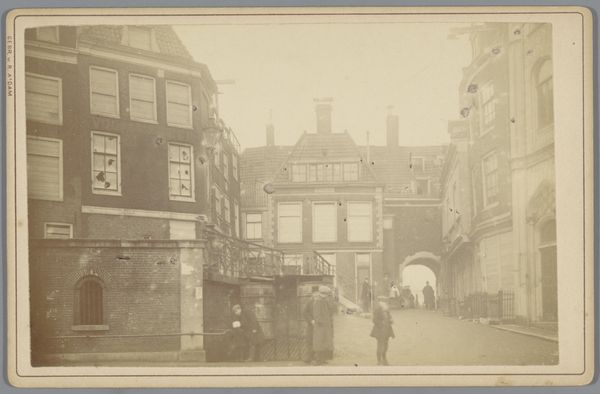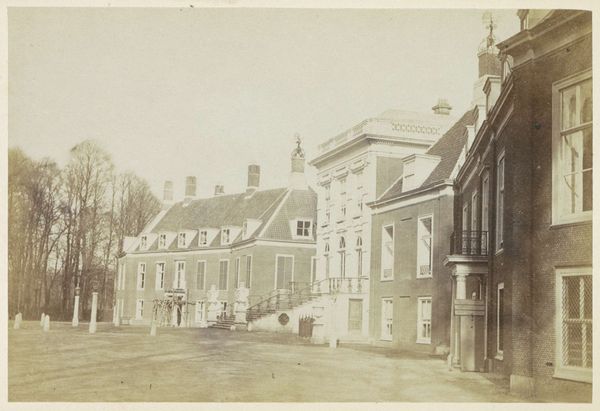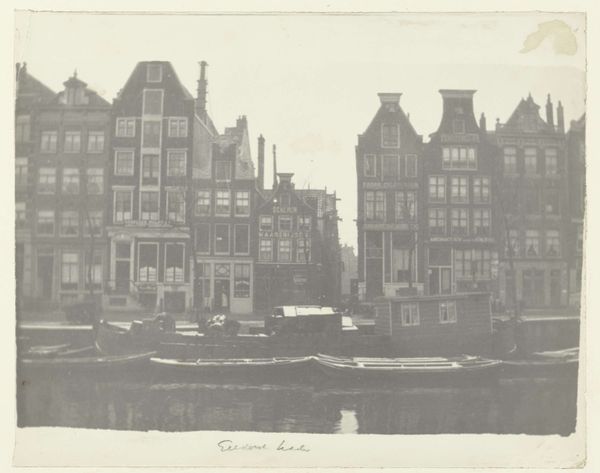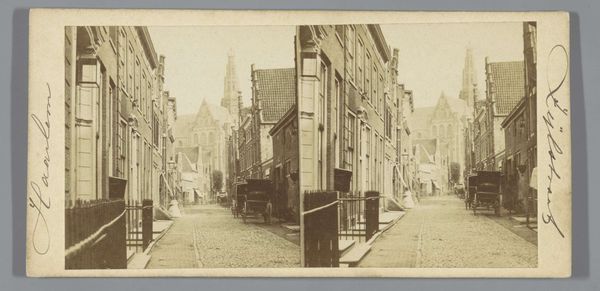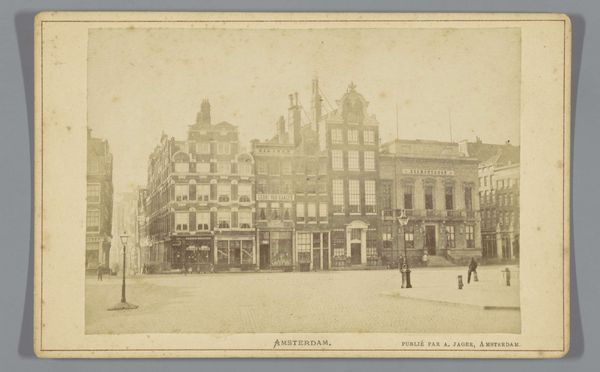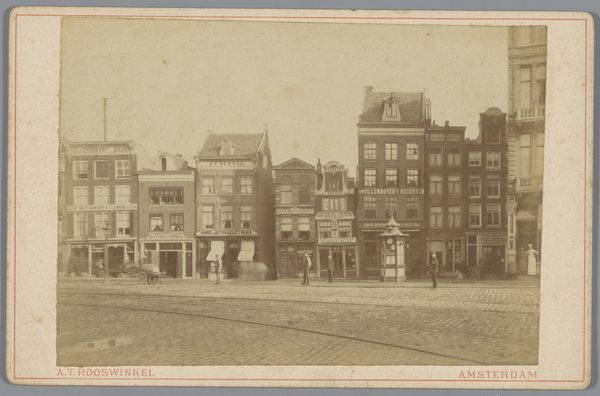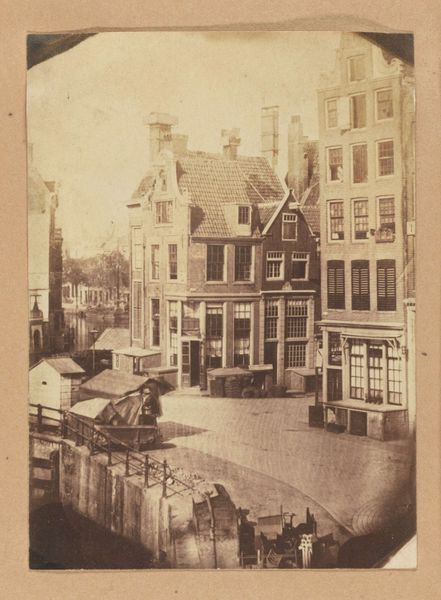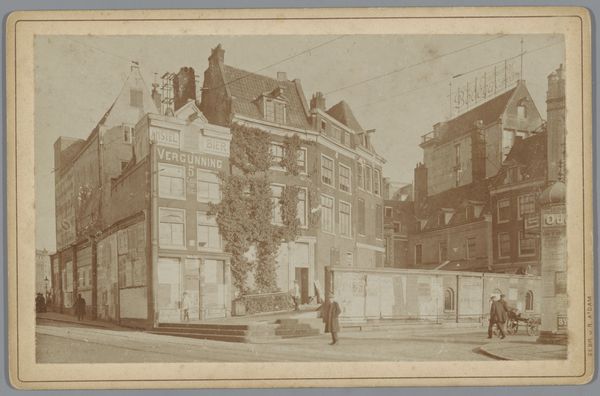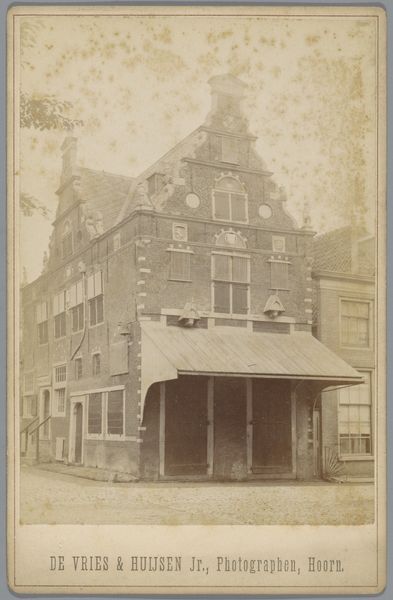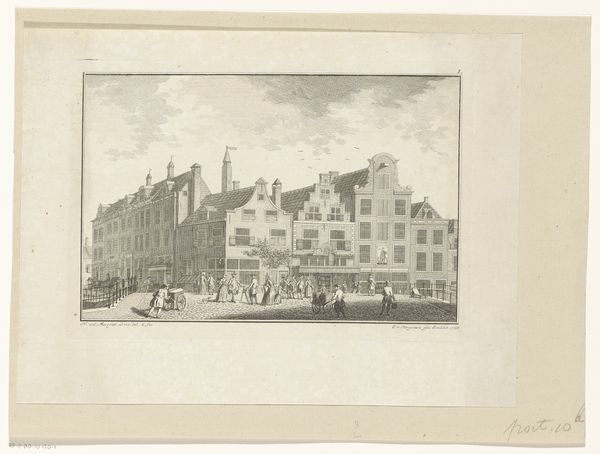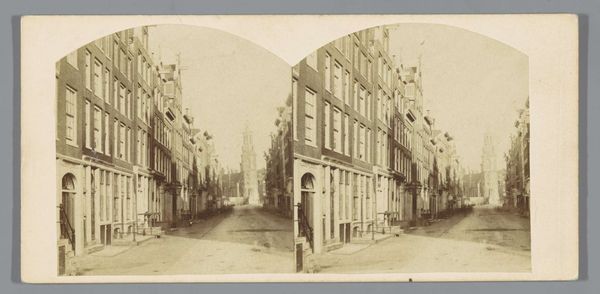
photography, gelatin-silver-print
#
dutch-golden-age
#
street-photography
#
photography
#
gelatin-silver-print
#
cityscape
#
street
#
realism
Dimensions: height 107 mm, width 167 mm
Copyright: Rijks Museum: Open Domain
Curator: Looking at this gelatin silver print by Andries Jager, taken sometime between 1860 and 1890, one is immediately struck by the scene—the Slijpstenenmarkt in Amsterdam, captured in a way that feels both familiar and distant. Editor: Distant is the right word. There’s an air of quiet solemnity, despite the subject being a public market. The sepia tones contribute to a feeling of historical remove, almost a staged formality that’s quite affecting. It makes me feel melancholic, yet curious about that era. Curator: The lack of bustling activity does contribute to that solemn feeling, doesn't it? I think that has a lot to do with the long exposure times of early photography; Jager couldn’t simply freeze a chaotic, lively market scene as we might today. However, look at the architectural symbols. These buildings themselves are meant to communicate stability, commerce, and the very ethos of Amsterdam’s golden age. Editor: Exactly. I wonder about the choices inherent in staging the shot like this. A public space devoid of people becomes almost symbolic of civic order and values rather than lived reality. Did Jager mean to sanitize it, creating an idealized Amsterdam for his viewers? Curator: It’s interesting you say that. The choice of angle, the buildings facing us like silent witnesses… They echo classical Dutch paintings, embedding the values of the city in its very structures, as you said. There is symbolism everywhere –the position of buildings, their architecture; all of it speaks to that golden age. Editor: I hadn't considered the staging being used for civic promotion. Thinking about how the piece likely circulated helps unlock the symbolism – it transforms a simple city view into a document loaded with the ambitions of the people it depicts. Curator: It reminds us of the public role of imagery back then – and, frankly, still today! Photography became not just about documentation, but about crafting specific messages. Editor: Ultimately, Jager's work provides a unique window into the dialogue between photography, urban identity, and cultural aspiration in 19th-century Amsterdam. The interplay of reality and carefully constructed symbols leaves a lasting impression.
Comments
No comments
Be the first to comment and join the conversation on the ultimate creative platform.
